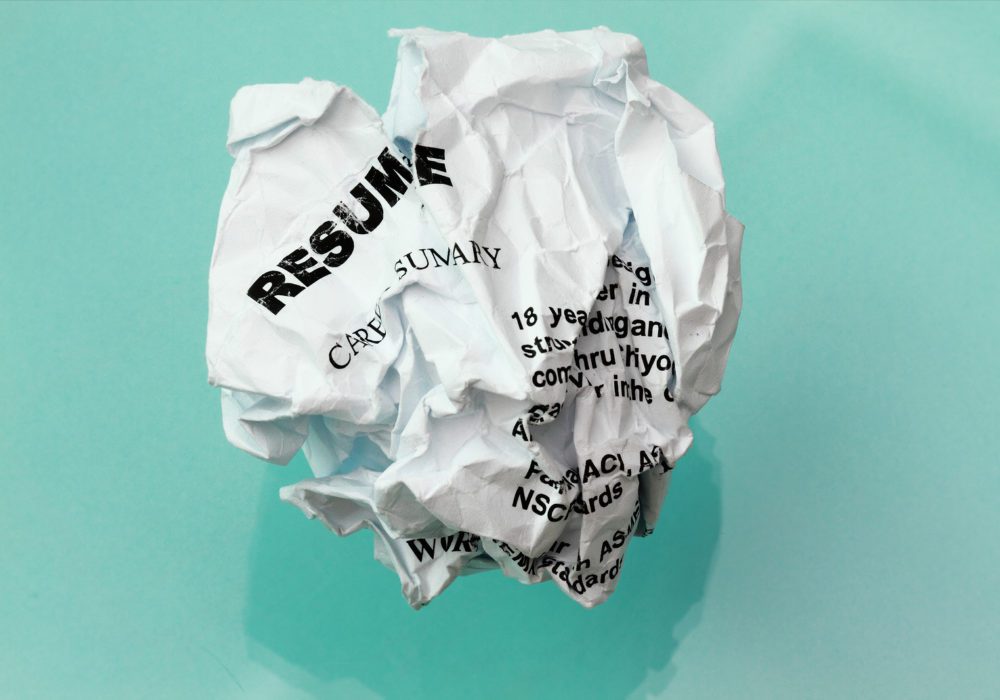One of the most common reasons that alumni contact us in Alumni Career Services is to update their resumes. Many times post-graduation, alumni take the resume they developed with the Career Development Center while on Grounds and add each new job on to it. However, MBA alumni should be transitioning their resumes to the mid-career format after graduation. Earlier this year, we unveiled a new resume style guide that leads alumni through the key components of a resume.
Before getting into the tactical pieces of the mid-career resume, the most important thing to remember about your resume is that its purpose is to gain a meeting or an interview with a decision maker. While it seems obvious, try to remember that a resume is a marketing material and not an autobiography. It can be very difficult to part with the 20 bullets that you had prior to Darden about your jobs in wealth management, but if you are now a consultant turned hospitality executive then it’s time to shave down the wealth management experience to the few bullets that are now relevant.
As you will see on the resume style guide, all mid-career resumes also start with a career summary. This is probably the most important piece of the resume because it’s often the only part of your resume that someone reads. The career summary is usually 3-5 sentences and highlights the experiences and skills that you bring to the target job that the person reading would feel are important. Generally, people will give themselves a title either above the career summary in bold or in the first sentence that marries your current position and experience with the target role. For example, if you have been a strategy consultant specializing in health care and retail clients and you have decided to transition to an internal role in the health care industry then your title would likely be something like Health Care Strategy Executive (leaving out your retail expertise because it’s not relevant to the target role).
If you are applying for roles that request specific “hard” skills, then underneath the career summary, a table of bullets that lists the specific skills that you bring is also very helpful to the reader.
Other major changes you’ll notice from your CDC on-Grounds resume when you transition to the mid-career resume include:
- Education shifts to the bottom
- Length often stretches to a second page (aim to fill at least one-third of the second page)
- City/state moves to the right margin, dates shift into the role (rather than in the margin)
- Experience becomes left justified freeing up more space
Some of the most common questions we receive about resumes are:
- I am applying to positions in two different target areas — what do I do with my resume? Most people in this situation develop two versions of their resume. Sometimes, it only requires two different career summaries. In the example above, if this person instead is looking at internal roles in health care and retail, they’d have one for Health Care Strategy Executive and one for Retail Strategy Executive. Sometimes, it does require tweaking the experience section to highlight experiences that are more relevant to the target job.
- When should I transition to two pages? Ten years of experience (including the two years at Darden) is often a good rule of thumb. However, sometimes adding the career summary and several jobs under experience is too voluminous and a second page becomes necessary. As long as you are being judicious in what you are including and you have relevant post-Darden experience, then it’s fine to stretch on to the second page.
- Do you have any sample resumes? Yes, in Alumni Career Services, we’ve had over 50 alumni generously donate their resumes to us to share with other alumni in the job search process (we always request that our alumni keep them confidential and for their job search only). We are generally able to share two resume samples with our clients.
- I just graduated. When do I move to the mid-career format? In the first six months post-graduation, you can continue to leave your resume in the Darden CDC format. However, after that point, the mid-career format becomes more appropriate.
As always, please feel free to reach out to us anytime in Alumni Career Services if you are looking to update your resume or want to have a conversation about your career.





